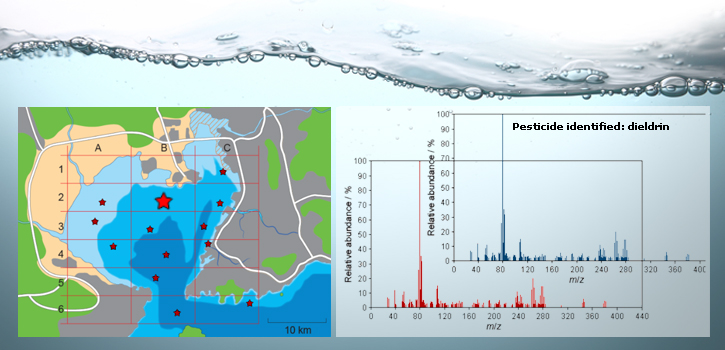Pesticide analysis with GC-MS

Finding environmental pesticides by gas chromatography and mass spectrometry.
Background and nature of the task
This investigation considers the presence in water of pesticides. The term ‘pesticide’ encompasses a wide range of organic compounds used to control weeds (herbicide), fungi and moulds (fungicide), insects (insecticide) and pests (pesticide). Traces of these compounds may enter rivers and surface water as run-off from agricultural land (where they are used to protect crops) or via non-agricultural use (for example, the use of herbicides to control weeds along motorway verges). They may also percolate through soil into ground water.
Pesticides, in addition to their inherent toxicity to many species, also include a class of chemicals known as endocrine disruptors. Endocrine disruptors, or hormone mimics, may play a role in a range of health problems from reproductive abnormalities to defects of the nervous system and cancer.
The EU directive on drinking water has set a standard of 1 μg l−1 for individual pesticides and 5 μg l−1 for the total pesticides present. There are stricter standards for the organochlorine pesticides (OCPs), such as dichloro-diphenyl-trichloro-ethane (DDT), which are now banned in many countries. This class of pesticides is very persistent, remaining active in the environment for a long time after initial contamination. Such chemicals may still be observed in samples many years after they have been banned. The use of OCPs has been widespread in the lower- and middle-income countries owing to their high efficiency and low cost. As well as their role in agriculture, a number of pesticides (including DDT) have also been used to control mosquitoes and other parasitic insects prevalent in many of these countries.
In this investigation you will use the technique of gas chromatography together with mass spectrometry (a combination also known as ‘GC–MS’) to evaluate the environmental contamination of a tidal bay in China by this class of persistent organochlorine pesticide.
You will first develop a hypothesis and sampling plan, choosing which sites to sample in the bay. You will then use GC–MS qualitatively to identify any pesticides present in your samples and quantitatively to determine the concentrations of any pesticides you have found.
Duration and pattern of use
- 1 hour preparation for experiment; hypothesis, sampling plan
- 70 mins online experiment
- 30 mins analysis, interpretation